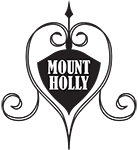by Marianne Ligon
Whether we are aware or not, we use symbols every day. When we see a red octagon sign at the end of the street, we know to stop. The golden arches are recognized worldwide as a place for hamburgers and fries. And the stick man or stick woman guides us to the appropriate restroom everywhere. Most people know the cross as a symbol of Christianity and the Star of David as one for Judaism, but few know the fern frond is a symbol for sincerity or sorrow and the scallop shell symbolizes a journey or pilgrimage.
Cemeteries house a wealth of symbols and iconography. Not only are there numerous styles of crosses: the Western, Latin, Celtic, Maltese, but some even are mingled with flowers and vines. Ivy may represent memory, friendship, fidelity as well as immortality or eternal life as it is always green. The morning glory represents resurrection, mourning, youth or brevity of life. The palm is a symbol of spiritual victory, the rose of love, beauty, hope and the lily for innocence and purity. Religious art and nature are only a few of the types of ornamentation found in cemeteries.
Architectural features and items from a daily life are visible on some markers. A broken column means a life cut short. Often a column will have a drape or pall over it representing sorrow or mourning. An obelisk is one of the oldest forms of symbols dating to the Egyptian for whom it represented the ray of the sun. For them the sun symbolized immortality. A scroll symbolizes a life as does an open book. An urn is a Greek symbol of mourning and may even have a pall on it or a flame (eternity) or additional meaning. There is even evidence of vocations and secret societies on markers. A caduceus may appear on the marker of a doctor, musical notes for a musician, and scales for a lawyer. Woodmen of the world often have a marker in the shape of a tree trunk. Odd Fellows would have a chain and Masons an all seeing eye or the square and compass.
There is so much more to read than the names and dates on the markers of Mount Holly. Call for a tour or spend a few extra minutes studying the symbols and learn to read the stones. There is a story to be had.

